Between early wired networks and today’s fiber optics sat a system of microwave relay towers transmitting information from coast to coast across the United States. Built in the early 1950s, this line-of-sight network spanned the continent using zig-zag patterns to avoid signal overlap. It conveyed phone conversations and television signals from the era of the Kennedy assassination through the resignation of Nixon.
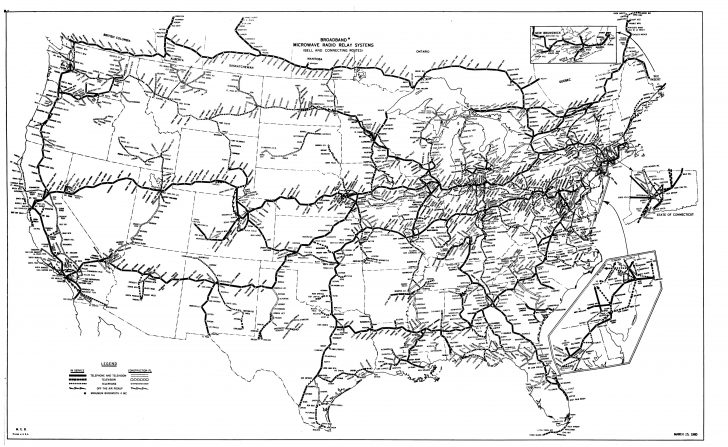
The towers were generally spaced 30 to 40 miles apart and can be hunted using old official charts or this unofficial Google Map. It was the largest network of its kind when it opened, and unique in relying on microwaves rather than transmission wires.
A few years back, photographer Spencer Harding got interested in the history of these towers and raised funds to shoot and publish a book about them. The Long Lines collects dozens of Californian towers from six weeks on the road spent documenting them (excerpts above).
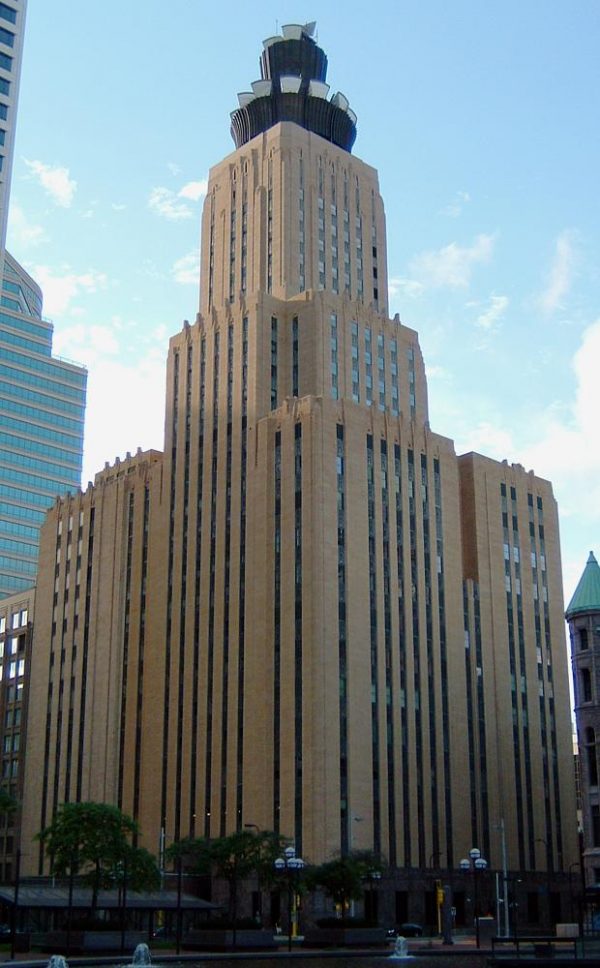
Today, many of the towers are in disrepair or have been taken down entirely, but some are built into the very design of urban architecture. Others can be easy to miss among HVAC outcroppings, cell towers and other antennas but are possible to spot if you know what you’re looking for. In the countryside, old towers are often found adjacent to concrete bunkers (some are even occasionally for sale). At times, you can even catch a glimpse them in late night show backgrounds.
The microwave relay system was part of the AT&T Long Lines network, which included wire and cable connections. 99pi fan and Long Lines aficionado Corey Carlson explains that “the Long Lines network relayed analog data from one horn to another, with polarization of radio waves to expand the signal capacity.” Their “SUV-sized ‘horn’ antennas” were designed to focus radio signals out horizontally toward other towers and be durable, “resistant to the pressure wave from a nuclear blast.”
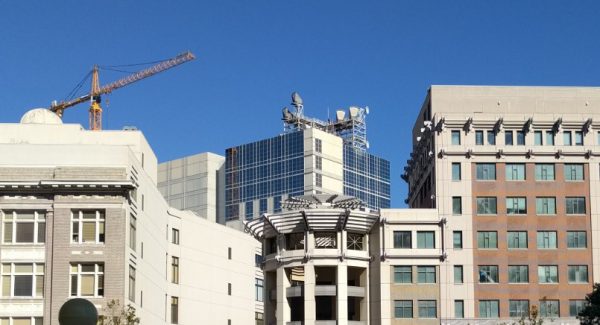
Obsolete in today’s world of fiber optics, satellites and wireless internet, many of the towers have been taken down or swapped out for cellular use. Some, however, serve as emergency backups in rural areas. And others, it would seem, are so built into the aesthetic of their associated buildings that owners have seen no reason to remove them.
For those looking to learn more about this technology, there’s a wealth of information on these systems — including images, maps, diagrams, magazine and newspaper clippings — to be found on Long-Lines.net.
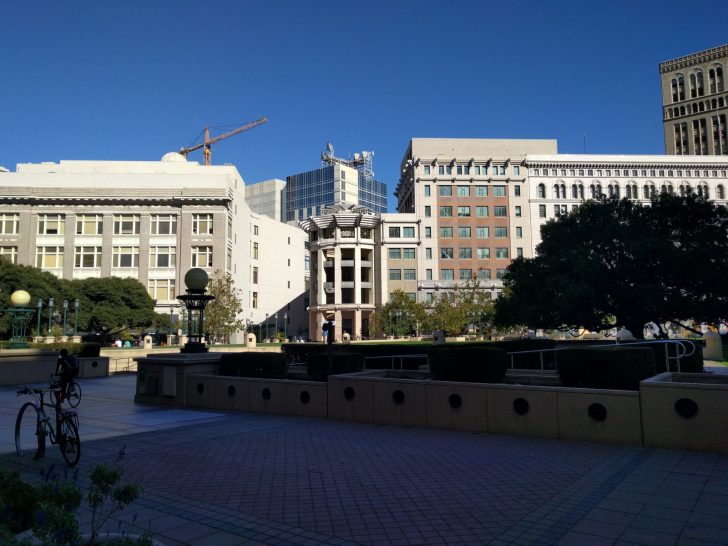


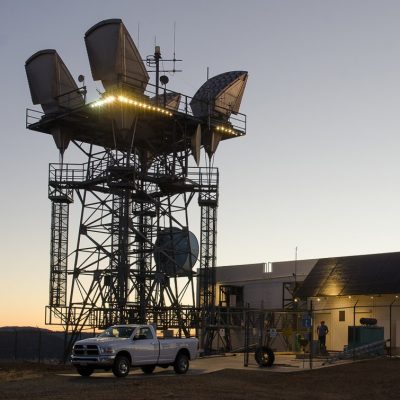
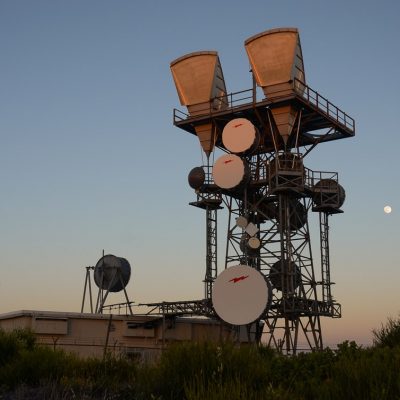



Comments (11)
Share
Ahhhhh that’s what that tower was up in the old Nike missile site in San Rafael. Growing up and exploring in it’s shadow I always wondered if it was a relic of the Nike program or something else.
Wonder what all those high energy microwaves have done to public health during that time.
“Wonder what all those high energy microwaves have done to public health during that time”.
Absolutely nothing.
The microwave transmitter power was only 1 watt originally, then upped to a whopping 3 watts in the last years of operation when Bell Labs and Western Electric came up with a microwave triode vacuum tube that could handle the power with an operational life of more than 3 days. The tubes in the relay stations had a life of only 3 weeks. That 1 watt of power (about 1/5 of the peak power from your cell phone that is inches from your brain) is spread over the entire area of the horn antenna opening, so even standing directly in front of it the power a human would be exposed to is extremely small.
The magic of the horn antenna design is that it truly focused the beam so it spread very little.
I’m surprised that you wrote a whole article about Long Lines and didn’t mention the oddity that is 33 Thomas St in New York.
Your history is a bit compressed, you should have said from the era of Harry Truman or at least very early Dwight Eisenhower… through George HW Bush… Transcontinental TV from east coast to west depended on this microwave system, so at least parts of the country were served by it in the 1948-50 era (Truman).
Most of the analog AT&T microwave network was shut down in the late 80s to very early 90s though a few bits and pieces kept going and were converted to digital in that era and shut down later (and a tiny bit survives as backup to remote places).
Fiber optics replaced almost all of it, and also replaced the cold war era underground coaxial cable network that was the other major longs lines transmission technology at that time. First major fiber routes were installed in the mid 80s…. and currently one single glass fiber pair using DWDM can carry several thousand times the traffic that all the microwave RF channels allocated to this system could carry put together if they were used on just one path.
In Marcellus New York, we had two of these “Long Line” systems. North of the village of Marcellus, was an above ground heavy cable that was lead shielded. It ran across the back of the farm land off of West Seneca Turnpike, heading west to Limeledge Road, and ran along side of Limeledge road. The other one was below grade. We actually had a training drill in the early or mid 1980’s with the phone company. It was how to safely enter one of these underground vaults. This underground line I believe has been abandoned in place.
why is this missing all of texas?
Someone went in and deleted most of the South. I’ve rebuilt the map to include the entire country.
Thanks for this article. One such tower at 34.0942286,-84.1962554. I had to google around to find out what it is. Huge reinforced concrete building in the middle of nowhere.
Not just the US. The UK also had a similar system, with the “Post Office Tower” (now BT Tower) in central London being one of the more famous and visible artefacts. The horns were removed some years ago, and the tower now carries a LCD advertising sign.
The tower site remains a cable hub, is a protected landmark, but the inside is not accessible to the public anymore (there used to be access for observation and a revolving restaurant).
A lot of these sites have been repurposed for other communications services. I occasionally work in two of them, and very near a third. Those towers are nearly indestructible, and the site owners often leave parts of the building as they were back in the day. One of the sites I work in, Relay Peak, Nevada is the highest elevation site in the country, at 10,200 feet. It had a tramway built to it for access in the wintertime, but it collapsed in a snowstorm a few years ago. The owner of this site even repurposed some of the horn antennas for modern TV microwave systems.
Dropping by in April 2022..the 4 horns on the Fresno at&t office are still present, 2 pointed north to the now gone red top site, and 2npoijted southwest to Joaquin ridge. Haven’t verified, but google maps imagery shows insct horns at Joaquin ridge as well.